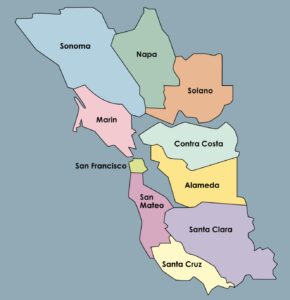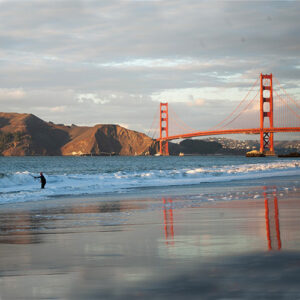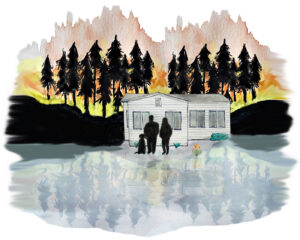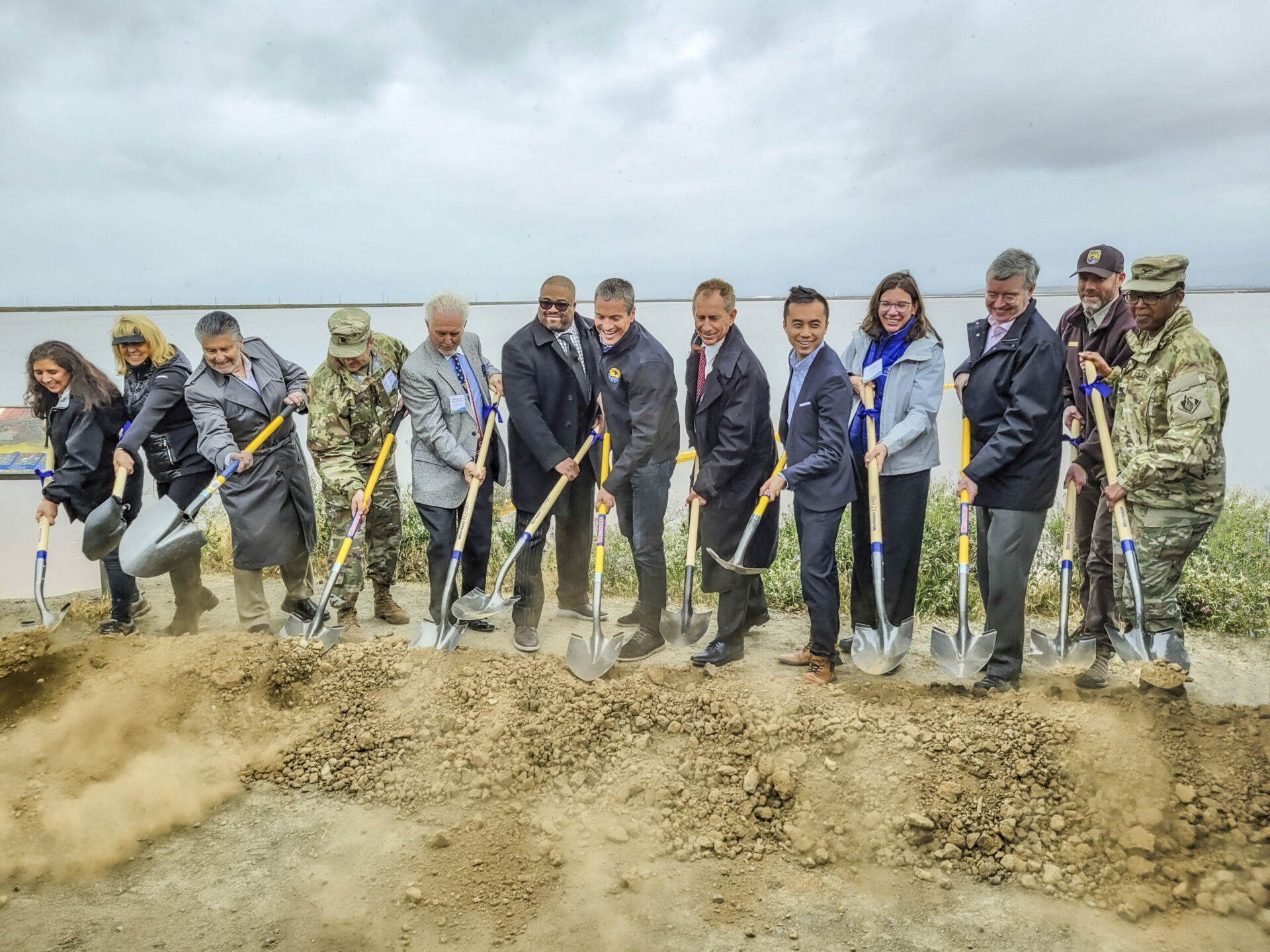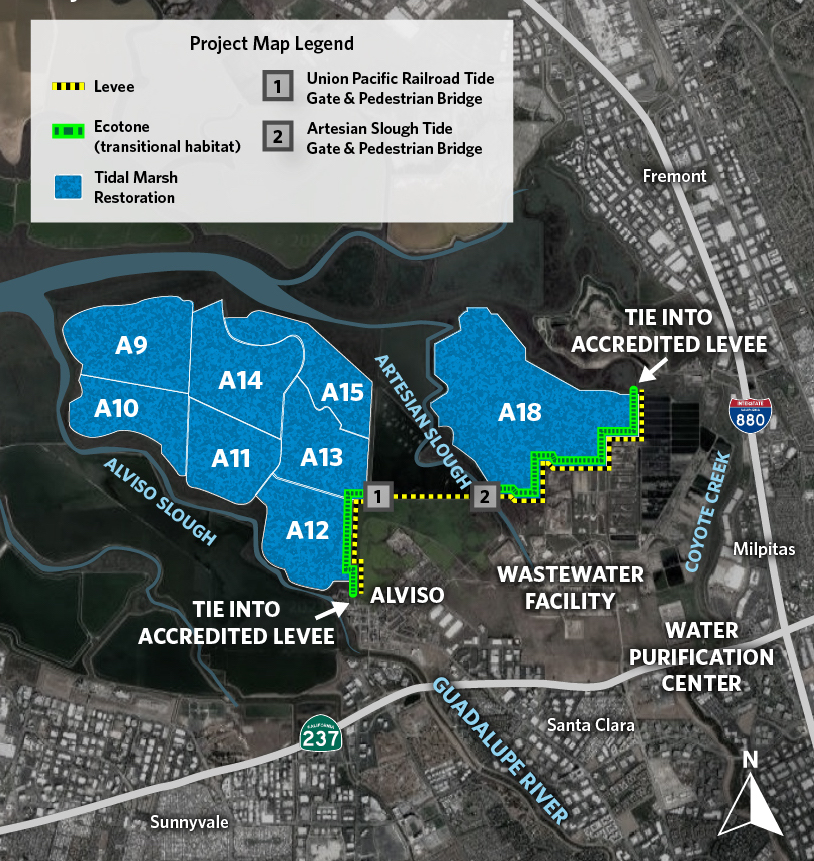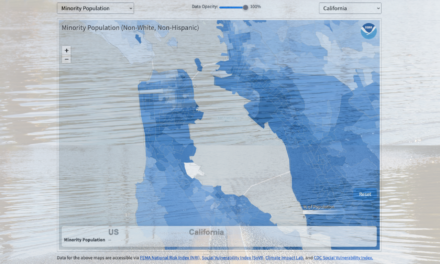A South Bay Levee Breaks Ground, And Records
On a drizzly Thursday in April, dozens of reporters, government officials, military brass, conservationists, and bureaucrats gathered beside a weedy shoreline on the edge of San Jose to break ground on an effort worth hundreds of millions of dollars.
“We have a grave responsibility to take action, and what you see behind me is an example of that action,” declared Wade Crowfoot, the California Secretary for Natural Resources.
The humble surroundings belied the significance of the South San Francisco Bay Shoreline Project Groundbreaking. The project will include four miles of new levee and 2,900 acres of restored habitats, like tidal wetlands, to buffer the South Bay from rising seas. It is the culmination of nearly two decades worth of planning. The project is also the first in the nation in which the U.S. Army Corps of Engineers has incorporated sea-level rise into its planning and design, according to a Valley Water press release. And crucially, it’s distinct from piecemeal city-by-city levee improvements in that it aims to protect a vast swath of the South Bay at once.
Valley Water (formerly the Santa Clara Valley Water District) hosted the groundbreaking event alongside an alphabet soup of contributing organization members: the San Francisco Water District, Bay Conservation and Development Commission, U.S. Army Corps of Engineers, California State Coastal Conservancy, and the United States Fish and Wildlife Service, alongside city, county, and state level elected officials. For many involved, the project’s broad popularity and multi-use benefits represent a best-case-scenario for sea level rise adaptation, and they’re impatient to see it working.
“We are at the crossroads and forefront of climate change,” said California Assemblymember Alex Lee. “It is very important that we continue to use natural solutions.” Nature-based infrastructure is the lynchpin of the South San Francisco Shoreline Project. Rather than walling off the most vulnerable areas from the Bay, the project will defend them from the encroaching sea with deployments of restored marshlands and sloping transition habitats along the levee.
These same defenses will also protect the San José-Santa Clara Regional Wastewater Facility, which serves over a million people. It is one of 36 wastewater treatment plants identified in California as vulnerable to sea level rise — 30 of which are in the Bay Area.
Other Recent Posts
Martinez Residents Want More Than Apologies — They Want Protection
After a 2022 release of toxic dust and a February 2025 fire, people in the northeast Bay town are tired of waiting for safety improvements.
Weaving Fire Protection Out Of What’s Already There
A new Greenbelt Alliance report shows how existing vineyards, grasslands, and managed forests can slow wildfire and save vulnerable homes.
Fall Plantings Build Pollinator Habitats in Concord
Community groups, climate advocates and a church are coming together to plant pollinator gardens as monarchs, bees see population declines.
Newark Needs Housing, But Could Shoreline Serve A Higher Purpose?
The Bay Area needs more affordable housing, but would 196-homes or a buffer against sea level serve local needs better in the years ahead?
Learning the Art of Burning to Prevent Wildfire
In Santa Rosa’s Pepperwood Preserve, volunteers are learning how controlled fires can clear out natural wildfire fuel before it can spark.
Who Will Inherit the Estuary? Training for a Rough Future
The six-month program teaches students aged 17 -24 about the challenges facing communities around the SF Estuary, from Stockton to East Palo Alto.
Split Verdict Over State of the Estuary
Habitat restoration and pollution regulations are holding the Bay steady, but the Delta is losing some of its ecological diversity, says SF Estuary Partnership scorecard.
Volunteers Catch and Release Tiny Owls For Science
In Santa Rosa, citizen scientists capture northern saw-whet owls to help further research on climate impacts to the bird.
Antioch Desalination Plant Could Boost Local Water Supply
The $120 million plant opened this fall and treats 8 million gallons of brackish water a day, 75% of which is drinkable.
How Cities Can Make AI Infrastructure Green
Data centers fueling AI can suck up massive amounts of energy, water and land, but local policies can mitigate the impact.
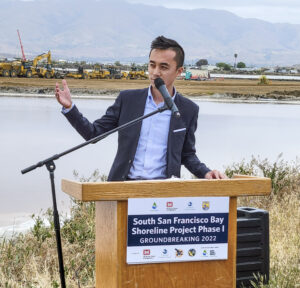 Funding for the effort comes in part from Measure AA, a regional parcel tax for shoreline restoration work which Bay Area voters passed in June 2016. San Mateo County Supervisor Dave Pine, who is chair of the San Francisco Bay Restoration Authority charged with managing funds collected from the measure, said in his event speech that the Shoreline Levee project has been their number one priority for using those funds “from the very beginning, from the very design of Measure AA.” Although this large-scale levee project has years of frenetic work ahead to build the blueprint into reality, Pine and other officials are already envisioning future projects, to the tune of restoring 15,000 more acres of tidal wetlands across the Bay Area protecting and transforming its shoreline at once.
Funding for the effort comes in part from Measure AA, a regional parcel tax for shoreline restoration work which Bay Area voters passed in June 2016. San Mateo County Supervisor Dave Pine, who is chair of the San Francisco Bay Restoration Authority charged with managing funds collected from the measure, said in his event speech that the Shoreline Levee project has been their number one priority for using those funds “from the very beginning, from the very design of Measure AA.” Although this large-scale levee project has years of frenetic work ahead to build the blueprint into reality, Pine and other officials are already envisioning future projects, to the tune of restoring 15,000 more acres of tidal wetlands across the Bay Area protecting and transforming its shoreline at once.
California Assemblymember Alex Lee. Photo: USACE.

